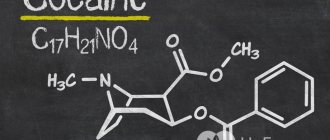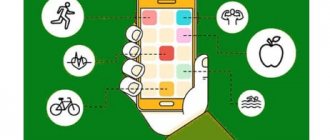Details Category: Drug addiction
The modern market of narcotic substances is regularly replenished with new “products”. Surprisingly, the majority of street drugs are drugs that were invented with good intentions. Designed to relieve pain or eliminate anxiety and depression, they sooner or later come to the attention of those who are looking for new ways to get drunk. And methadone, developed to produce a strong analgesic, is just such a substance.
History of creation
The drug was first obtained by synthesis in 1937. A patent for the invention was issued by researchers from Germany Gustav Ehrhart and Max Bockmühl. Diphenylacetonitrile with dimethylamine-2-chloropropane was used to create it. After 5 years, the synthesis was replaced by a simpler process, where diphenylbutanesulfonic acid was used to obtain methadone. During the Second World War, industrial production of the drug, prescribed as an analgesic, began.
A common myth is that the name "dolphin", by which methadone is also known, was given in honor of Adolf Hitler. In fact, this name was established as a trade brand in the post-war period. Methadone has become widespread as a medication used in substitution regimens for the maintenance treatment of drug addiction. But the drug itself and its regular long-term use leads to severe physical and psychological addiction.
Who is addicted?
Methadone substitution therapy is not provided in Russia. This substance is prohibited. But methadone is available on the black market and is in demand, especially in tablets. A powerful and long-lasting effect is what drug addicts like so much. The most common among them are:
- People suffering from opium addiction. They do not increase the dosage of heroin, but simply find a more powerful substance.
- A person with chronic pain. Legal painkillers stop helping, and then the patient is forced to use a hard drug.
- Guys and girls 20-25 years old. In pursuit of vivid sensations, in search of solutions to problems, they try methadone for the first time.
Effect on the body
Methadone affects the body through opioid receptors in the nervous system. The narcotic substance blocks the transport of serotonin and norepinephrine into brain cells. In people who are not dependent on opioids, methadone has effects similar to morphine. The substance suppresses the functioning of the nervous system, which is accompanied by clouding of consciousness. Another effect is the suppression of respiratory function - this is one of the most dangerous effects. With long-term use, the body becomes attached to methadone. The consumer is forced to take doses regularly and increase them.
Physiological symptoms
First of all, physical addiction develops, characterized by the following symptoms:
- Breathing too quickly, feeling short of breath;
- Increased heart rate;
- Vomiting and nausea;
- Unstable heart rhythm;
- Feverish condition.
To eliminate withdrawal symptoms, you have to constantly increase the dose. After 5-6 uses, a drug addict uses the drug not for pleasure, but to suppress anger and irritability, which is otherwise impossible to control. At the same time, the risk of overdose increases many times over.
Psychological manifestations
As soon as the drug completely subjugates the body, a change in the human psyche begins. The most vulnerable in this regard are heroin addicts who try to replace one drug with another. The signs are as follows:
- Constantly makes you sleepy, despite the absence of body fatigue;
- The emergence of groundless fears and pathological phobias;
- Paranoia, persecution mania, the drug addict thinks that they want to kill him or maim him;
- As soon as the narcotic substance stops working, depression and depression appear;
- All the described symptoms ultimately lead to prolonged depression and thoughts of suicide.
Methadone is not a panacea for heroin addiction. Statistics have shown that the highest mortality rate among drug addicts is among those who sat on the dolphin. It turns out that in order to quit methadone on their own, a former heroin addict needs to start taking heroin again in an increased dose, which is really life-threatening.
Signs of a drug addict
The drug methadone has the longest effect - from 24 to 72 hours. If you carefully observe a drug addict, you will notice the following symptoms of methadone addiction:
- Excessive sweating, even at rest;
- Intestinal problems: stool retention;
- Unreasonable vomiting;
- Insomnia;
- Loss of orientation in space;
- Excessive irritability;
- Mood swings;
- Paleness and yellowing of the facial skin;
- Blue circles under the eyes.
Psychotherapist help and rehabilitation
Methadone, like other narcotic compounds, destroys not only a person’s body, but also his psyche. In order for the therapy to be effective and ensure the expected results, it is important to use not only medications, but also psychotherapy methods during treatment.
Psychologists work with patients from the moment they enter the narcology clinic. Taking into account the client’s personality characteristics, they create a personal recovery program for him. It can include both individual and group sessions, lectures, trainings, and seminars.
To complete the fight against methadone addiction, the addict must undergo rehabilitation in a specialized center. It is necessary for a person to learn to live without prohibited stimulants, to establish relationships with others, to break ties with drug-addicted friends—to successfully adapt to a world where there is no place for drugs.
Need some advice?
OR CALL A DOCTOR
CALL!
+7
Composition of the drug
Methadone is produced by different companies, releasing drugs under their own names. Moreover, they all have the same active ingredient – methadone hydrochloride. Pharmaceutical companies add inactive substances to it:
- Preservatives;
- Flavor enhancers;
- Fillers;
- Aroma enhancers.
Methadone is taken orally in most cases. The drug is available in the following forms:
- Pills - each contains 40 mg of active ingredient. The tablet is dissolved in warm water and drunk;
- Powder for dilution in water and oral administration;
- Liquid is administered using a dosing pump; it is possible to clearly adjust the dose.
"Street" methadone exists in the following forms:
- Pills;
- Crystals;
- Powder (most common);
- Injection solution (rarely).
Harm from drugs
Methadone is a fairly toxic drug that causes intoxication. It causes serious harm to the body:
- The liver is destroyed;
- The body loses vital vitamins and microelements;
- The skeletal system is destroyed, joint pain appears, and legs and arms often break due to fragility;
- The psyche suffers seriously;
- Men develop impotence;
- In women, menstruation is disrupted, until it stops;
- The most dangerous consequence is depression of respiratory function.
If the mother is a methadone addict, withdrawal symptoms may be passed on to her child. This will manifest itself as high muscle tone, vomiting, holding your breath, and convulsions. Signs last for 48 hours after birth.
Consequences of long-term use
Long-term methadone addicts begin to suffer from physical and mental health problems, including:
- Difficulty breathing;
- Fainting;
- Heart rhythm failure;
- Mental instability;
- Tremor of the limbs;
- Hallucinations;
- Inability to have sex;
- Anxiety;
- Depression;
- Crazy thoughts.
The worst consequences of regular methadone use:
- Swelling of the respiratory system, suffocation;
- Complete lack of sleep;
- Hepatitis, liver cirrhosis;
- Renal dysfunction;
- Infertility;
- Death.
special instructions
Before starting treatment with the drug, you must stop using any synthetic drugs. Symptoms may occur: nausea, vomiting, weakness, drowsiness, lacrimation, depression, weight loss, loss of appetite, tremors of the extremities. It is important to note heroin withdrawal from adverse drug reactions.
To eliminate physical pain from operations and injuries in patients undergoing methadone treatment, it is possible to use opioids of another group as pain relief. While being treated with this drug, you should refrain from driving any vehicles. Methadone and heroin withdrawal occur in the same way and are accompanied by insomnia, excitability, pain, and surges in blood pressure.
- What does lichen look like in humans?
- Instant marinated zucchini
- What are the benefits of cabbage for the body? Useful properties of cabbage and contraindications
Danger of consumption methods
Methods of administering methadone: oral and injection (rarely used). The strength and duration of the effect depends on the “purity” of the composition. The drug purchased on the street has an unknown composition and concentration of the main active substance.
When taken orally, methadone is quickly absorbed into the blood. The action begins after 1.5 hours. The duration of a single dose is 4 hours, with the exception of individual deviations. When taken regularly, the drug lasts longer as it tends to accumulate in the body. The average half-life is 24 hours. The danger of this method is that due to the long wait for the effect, the addict may drink another portion of the substance ahead of time, causing an overdose.
Interactions
Methadone is a potent drug; you should consult your doctor before using it with medications. Combined use with other medications leads to a decrease in the plasma concentration of the active substance and withdrawal syndrome occurs. List of these medications:
- Carbamazepine, Rifampicin, Phenytoin and Phenobarbital;
- Nelfinavir, Ritonavir, Efavirenz;
- mu-receptor antagonists (Naloxone, Pentazocine, Naltrexone, Butorphanol).
The substances that make up Methadone negatively affect the pharmacological properties of many medications. These include:
- Zidovudine, Stavudine, Didanosine - lead to an increase in their toxicity.
- Monoamine oxidase inhibitors - increases the risk of severe adverse reactions.
- Azole antifungals, macrolide antibiotics and selective serotonin reuptake inhibitors - decreased drug clearance and increased adverse reactions; dosage adjustment is necessary.
- Antiarrhythmogenic drugs - cardiac interval prolongs.
- Antidepressants, antipsychotics, potassium channel blockers - cardiac conduction may be impaired.
- Diuretics, hormonal agents - caution should be exercised when combining.
Drug overdose
An overdose of methadone is extremely dangerous and requires emergency treatment.
Causes
Overdose is possible for the following reasons:
- Intentional or accidental overdosage;
- Use of a drug of unknown quality and composition;
- At the first appointment;
- Due to taking other medications, drugs and alcohol together with methadone;
- With reduced immunity;
- After a long break between drug use;
- With concurrent use of psychotropic substances.
Signs
The following symptoms will indicate an overdose:
- Narrow pupils;
- Muscle cramps;
- Sharp paleness of the skin;
- The pulse is barely audible;
- Loss of consciousness;
- Holding your breath;
- Coma;
- Heart failure.
An overdose of methadone differs from an overdose of other opiates in that it lasts longer and has more dangerous consequences. The reason is the slow removal of the active substance from the body. A long period of recovery and observation in the clinic will be required.
First aid
If poisoned, a drug addict will not help himself. This is the task of the people nearby:
- Call an ambulance immediately;
- If a drug addict has lost consciousness, he should be placed on his right side, with his head on his bent arm. Bend your left leg at the knee. Pull your tongue out of your mouth, and also free your oral cavity from foreign objects.
- If you have the drug Naloxone on hand, administer it according to the instructions.
- Wait for the doctor.
Health care
The doctor takes the victim to the clinic for inpatient treatment. For treatment, Naloxone is used in a dosage of 1-2 ml intramuscularly. If there is no effect, the dose is repeated after 5-10 minutes. The medicine works instantly. In severe cases, the patient is sent to artificial ventilation.
Lethal dose
The officially lethal dose of methadone is 25 mg for an intolerant adult and 200 mg for a healthy body.
Ways to stop action and antidotes
The consequences of an overdose can be stopped by providing qualified assistance and maintaining the vital processes of the body. An important point is to administer the antidote Naloxone in time. The drug completely eliminates the consequences of an overdose of opium substances; it is administered:
- Into the muscle;
- Into a vein;
- Under the skin;
- Intranasally.
If an addict has used other powerful drugs in addition to methadone, the antidote may be powerless. Naloxone has no effect on people who have not used opiate drugs.
How to ease withdrawal symptoms
Methadone withdrawal is difficult to overcome on your own. It is difficult for a drug addict to overcome the syndrome without medication support. Treatment includes taking clonidine to relieve the patient's suffering. At the same time, opioid withdrawal can stop on its own. It is not life-threatening. Physical and metabolic signs of withdrawal can last up to six months. Outpatient settings are suitable for treating addiction if the patient does not require psychological and physiological assistance in the clinic.
Bibliography:
- A popular reference book on methadone for doctors and other healthcare professionals.
- Features of the course of combined poisoning with “Street” methadone.
- Favorable outcome of acute severe methadone poisoning (clinical observation).
- Author Julia Sambros
Editor Artyom Emelyanenko
Is there a cure for methadone addiction?
Methadone addiction is a serious disease that affects the body on a mental and physical level. The drug destroys a person’s life in a couple of months. It is impossible to cope with addiction without narcologists. Few people will be able to overcome a long and painful withdrawal. There is another problem: little is known about methadone, especially among ordinary people.
If you or someone you know is dependent on methadone, only a doctor can help. Contact a drug treatment center to get qualified help. The patient is being treated in a closed hospital. Under the supervision of doctors, he overcomes withdrawal symptoms. Specialists help to form new life attitudes. A person learns to control his actions and live without drugs; he undergoes psychosocial rehabilitation.











